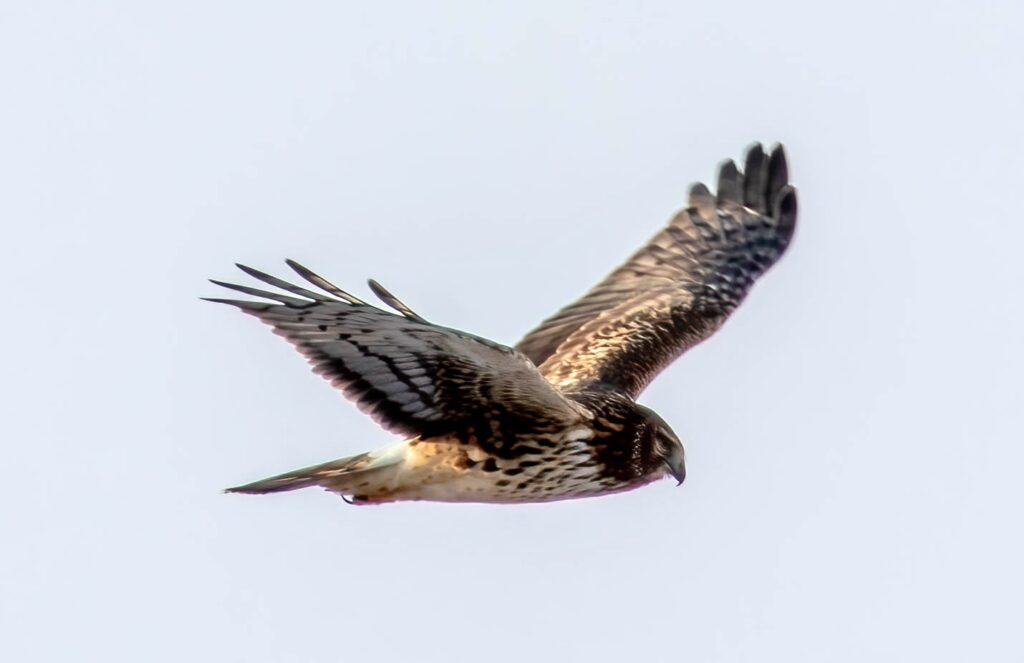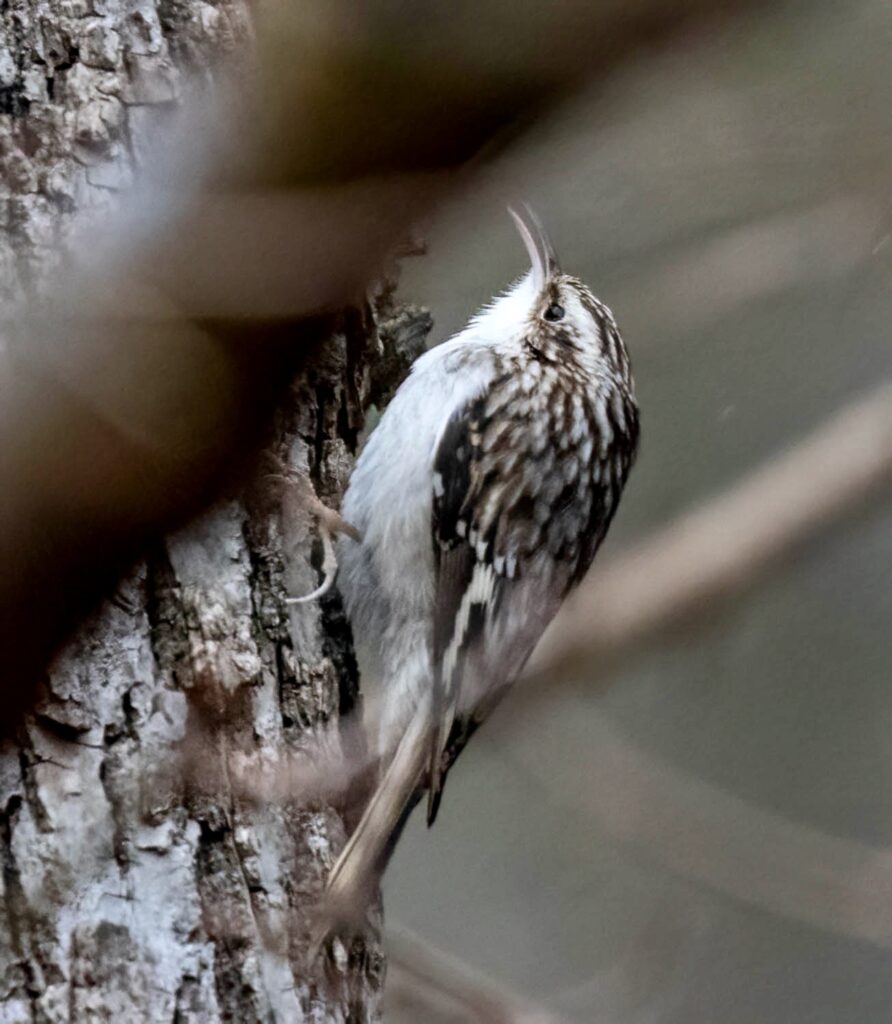There have been a few mild, sunny days this week. We’ve been out and have seen a few birds, but our post isn’t ready yet. Here is another look back on recent years’ observations.
Since our January 2024 weather didn’t offer many opportunities to see and photograph birds, we decided to review the birds we’ve seen in London since we arrived in January 2021. Here is a selection of birds from January 2021 and January 2022.
Common Mergansers, Hooded Mergansers and the occasional Common Goldeneye cruise the open water of the Thames.



Canada Geese stay near the river year round.

We often saw Bald Eagles flying along the river, hunting for prey. On one occasion, we saw an immature eagle land in a tree followed by an adult. The adult seemed to be scolding the younger bird who didn’t appear at all affected by the adult’s lecture or stern glare. Bald Eagles take four years to mature. The immature bird here appears to be in its second year.



Bald Eagles perch along the river and near the landfill where there were many gulls and other birds foraging in the adjacent fields. Besides fish, Bald Eagles consume a wide variety of prey.


Other raptors also survey the ground for prey. Northern Harriers fly low over the ground, scanning for small rodents or birds. They consume their prey on the ground. Harriers, unlike other raptors, rely heavily on their sense of hearing to capture prey. Red-tailed Hawks hunt from a high perch, but also catch birds while flying or chase ground prey in low flight.



Great Horned Owls nest in several locations in London. They form monogamous pairs and mate in the winter months of January or February. They have a diverse diet of mammals and birds, usually hunting at night.


Great Horned Owls are often harassed by crows and other songbirds.


Some birds are short-distant migrants, arriving from farther north during the winter. American Tree Sparrows, Horned Larks and Snow Buntings arrive in the fields outside London to forage on the ground for seeds.
American Tree Sparrows


Snow Buntings (above) and Horned Lark


Dark-eyed Juncos are also short-distance migrants that spend the winter foraging for seeds. Juncos seem to be comfortable in city parks and at bird feeders as well as in the fields outside of town.

Other songbirds, such as Brown Creepers and Red-bellied Woodpeckers forage for insects in tree bark, but will also eat seeds and visit bird feeders in winter. Red-breasted Nuthatches feed on conifer seeds in winter, but also visit bird feeders and take seeds offered in the hand. Northern Cardinals, Cedar Waxwings, and American Robins often feed on fruit, but supplement their diets with insects and other foods depending on the time of year.






The Guess Who
We were reminded of The Guess Who by a concert recording called “Randy Bachman’s Vinyl Tap Tour: Every Song Tells a Story” we watched on Prime TV. Randy is an entertaining storyteller. He and his band performed the music for an appreciative Winnipeg audience.
American Woman (rehearsal)
Bachman Cummings – Hey You, Let It Ride & Takin’ Care of Business
Bachman Cummings – You Ain’t Seen Nothing Yet (slow & fast version)